Children are starting to go back to school and parents, including myself, are scrambling to try and navigate a new type of teaching our children at home whether we are homeschooling or we are assisting with distance learning. Either way, there is a lot to be said about the types of learning your child is doing that will not only benefit them now, but also in the long run. As a mom and a play therapist, I value traditional academics and also know the power of learning through play in an experiential way.
This week I had the privilege of co-hosting a virtual Back to School “Coffee and Coding” event with Osmo and So Cal Moms where I shared some of my homeschooling and parenting tips for navigating technology time, the importance of learning through play, different learning styles, the benefits of coding, and why I love Osmo and their new Coding Starter Kit. And now I will be sharing everything in this blog! I hope you find it informational and helpful!
But first, let me tell you how fun the Coffee and Coding event was to co-host! Since our world has gone virtual due to the ongoing pandemic, this was a great way to connect with other like-minded moms online with some delicious drinks and snacks while talking about what we love most, our children and their education!
The Importance and Benefits of Learning Through Play
As a mom and play expert, I strongly value learning through play. There are so many benefits of learning through play. Below is a short list of why I love play so much and why I incorporate structured and unstructured play into our daily routine at home. I recommend children getting a minimum of 60 minutes of play each day, either all at once, or broken up into segments, depending on the schedule you are following and implementing in your home. And if you can take the play outside, that’s a huge bonus! Play:
-Improves brain function and cognitive development
-Decreases Stress
-Helps develop stronger communication and social skills
-Increases language and vocabulary skills
-Allows children to overcome emotional challenges and difficulties
-Improves motor skills, hand eye coordination, and physical functioning
-Helps skills like taking turns, sharing, following directions, and reasoning
-Allows a child develop and explore through creativity and imagination
Different Learning Styles
There are 3 types of learning styles; auditory, visual, and kinesthetic learning. I am personally a kinesthetic learner, otherwise known as a tactile or hands on learner. This means I learn best by physically going through the motions rather than just listening to instructions or looking at them on a piece of paper and or watching someone else do the task at hand. If you can incorporate all 3 learning styles, that is even more ideal! Incorporating all 3 learning styles also helps children retain the information longer than just memorizing material or concepts, regurgitating what they learned on a test, and then forgetting it a short time thereafter.
Multi-sensory learning helps children work through problems more effectively and keeps children more engaged in the learning process.
Why I love Osmo
One of the biggest reasons I love Osmo is because their games incorporate all 3 learning styles; auditory, visual, and kinesthetic. My children first started using Osmo last year and as a parent and educator, I was very impressed. Osmo incorporates learning and play in a fun, creative, tactile, colorful, experiential way and sets children up for social and academic success. Osmo cultivates unique and effective learning and allows children to immerse themselves in an imaginative world of play and experimentation while learning essential life and educational skills.
In my opinion, Osmo goes beyond the book. I often tell my students that theoretical learning from a textbook doesn’t always translate into real life situations. Skills like thinking quickly on your feet, critical thinking and problem-solving skills,
and thinking creatively outside the box using your imagination isn’t always encouraged in a traditional school setting, thus learning from a tool like Osmo is worth its weight in gold for a young developing student mind!
It’s also no surprise that children love technology and screen time. They also love playing and being playful. Osmo has a way of marrying the two together where children can play while having screen time while at the same time immersed in a learning environment that supports brain growth, cognitive development, vital educational skills, while spurring imagination and
creativity in a tactile, fun, experiential way.
Benefits of Coding
STEAM learning is the so beneficial for children and coding is one of the best ways of learning through this model. In the technological age we live in, coding is essential for children to learn problem solving skills, thinking creatively outside the box, fostering communication skills and language development, understanding following step by step instructions, learn valuable critical thinking skills to help during adverse life situations, and preparing them with valuable skills they can apply for future careers.
And honestly coding is something most adults don’t know how to do so children are empowered with this new knowledge of how to immerse themselves into a world that they can create at the touch of a screen. It’s a craft and a language they know how to speak like being in a special computer club only they can comprehend. Learning coding at an early age is like learning to ride a bike or learning a second language. If done early, these skills will be embedded forever while their brain is still actively growing and developing. Children can grasp new concepts at an early age more than adults, as their brains are still growing and developing, which is why it’s important for children to have items like Osmo available to them.
I’ll be honest, at first, I was extremely intimidated by coding. I didn’t understand it, didn’t know the benefits, and it seemed complicated. But then I was sent the Osmo Coding Starter Kit and everything changed. As soon as we opened the box and started using it, it was super simple to understand and so fun to play! My daughter was immediately engaged and then started asking everyday to play with it. She works through the scenario and strategically plans out her moves and gets so excited when
she finds the solution!
The kit is intended for children 5-10 years old and is compatible with iPad or Fire tablet. With the 3 different games and levels of play, this game grows with children based on their age, learning level, and cognitive ability, which means it’s a great investment that can be used over long term over time where children won’t get bored and move on quickly. With the Osmo Coding Starter Kit, children can start with Coding Awbie, then create music and intermediate coding skills with Coding Jam, and then finally show off their advanced skills in Coding Duo. All 3 levels teach children concepts like sequencing and looping!
I love that Osmo’s new Coding Starter Kit comes with 3 different games and varying skill levels so children can grow with the game and not get bored with it too quickly once they start mastering one level, they can move on to the next based on their age, development or cognitive level.
It’s screen time that I can approve because of all the benefits including:
-Coding encourages experimentation as well as trial and error. This can be a challenging task for some children if done in a traditional learning environment where a grade is on the line, peers are watching and being subjective, or in a way that makes them feel like if they don’t get the right answer they will fail. If done with a fun, play based learning model, like Osmo, figuring out the best way, not the right way, will empower a child’s confidence and will leave them craving more in the fields of math, science, art, and keep yearning to find solutions to problems instead of giving up. It teaches them to think in different ways and try as many times as it takes to make it work.
-Coding helps children visualize abstract concepts and apply math to real-world situations
-Coding helps children organize and understand the world they live in better, which can be transferred to other life skills and challenges they will face in their lifetime.
-Coding helps children build their problem solving skills, writing skills, calculation skills, logic, and math skills
-Children don’t have much say in their everyday lives. They are constantly told what to do by parents, teachers, and other adults. But with coding, they are able to freely design something all on their own and of their own in an exciting and rewarding way.
-Coding opens up more possible job opportunities for future careers or higher paying careers that are in demand as a software or computer programmer in a multitude of fields – even developing their own website!
Incorporating Technology Time During Home Learning
There are various ways to incorporate technology time at home. If your children are distance learning through their school they will be expected to be online throughout the entire day and will have a lot of screen time, much more than if they were attending school in a traditional setting. Thus technology time needs to be more intentional during the day. Here are some tips:
-Use Osmo to supplement during designated STEAM learning time that involves science, technology, engineering, arts, and or mathematics lessons
-Use Osmo during a special time of day outside school during designated technology time as more of a play tool
-Use Osmo during “rest time” as something they get to go during a time of day that is free choice
-Use Osmo as a reward that they can earn time to after finishing homework, doing chores, completing an act of kindness, etc.
-Use Osmo as a way to invest and bond with your child and to play and have fun with them!
-Use Osmo as a time for you to get things done like work, cooking dinner, or cleaning the house while your children are playing, learning, and actively engaged in their own educational activities and games!
Parenting Tips To Navigate Home Learning
As a busy working mom of two and trying to be my children’s teacher this year, I know it’s hard. Many of us are wearing many hats this year and trying to “teach at home” for the first time. So first and foremost, give yourself some grace. Don’t do too much at once. And if there is an “off” day, don’t stress. Pick up where you left off the next day. Here are some other tips that might help:
-Try and wake up an hour earlier than your children as dedicated time for yourself and or to prep for the day. Grab a cup of coffee, embrace the peace and quiet, and hustle to get as much work done as you can before switching to mom or teacher mode.
-Set a fluid and flexible schedule. The more prepared and prepped I am for the day helps set the pace for the day for me and my children. If I am overwhelmed and stressed, my children are as well. But if I have a schedule and a plan, things seem to run smoother and seamless.
-Implement a midday “rest time” with your children. Ever since my children both stopped napping, I have been using a rest time system where my children will go to their rooms for 30-60 minutes each day to rest and have time alone. This time also gives me a break during the day to rest, recharge, and refocus. I also can get a lot done during this time of day. During this time, my children can read books, play with toys, rest on their bed, play with kinetic sand or a sensory box, or do arts and crafts. If you have never done this before, start slow with only expecting 10 minutes and work your way up to 60 minutes over time each day. And if needed, use a reward system like a sticker chart that they can earn things like an ice cream, staying up 15 minutes past bedtime, or even 15 minutes of technology time for staying in their room for the designated time each day. You can also give them activities to do that is only during “rest time” so they look forward to those special activities during that specific time of day! I also believe it helps to have a visual timer since young children have difficulty telling time at an early age and 10 minutes can feel like forever! I suggest getting a visual timer app or using a mini sand timer so they can keep track of the time themselves!
-Take a lot of breaks and don’t expect to teach from 8am-3pm everyday! Children have a limited attention span and learning capacity. Typically, you should prepare to transition between topics and take breaks every 15-20 minutes depending on your child’s age. During this time, it’s important to take breaks, get some water and a snack, go outside to get fresh air, get a little exercise, and or change locations for your next lesson. I personally love having a dedicated school space for the core academics, but if needed, changing environment may help your child refocus after transitions with a fresh start and new perspective. You can also tell your child to complete 5 math problems, then run 5 laps around the kitchen island, and then come back to do more problems. Be creative and help make learning fun and manageable!
-Acknowledge and accept that there will be bad days. It’s perfectly normal and expected to have a bad day. There will be protests and there will be meltdowns and its ok. If this happens, take the day off and resume school the next day. Your children will still learn what they need to, but try not to force it, it will only stress you and your children out.
-For more tips please read my recent blog titled “Top 10 Homeschool Tips and Virtual Learning Must Haves” and “Top 10 Ways to Help Children Transition Back to School”!
This post is sponsored by Osmo but all photos and opinions are my own.

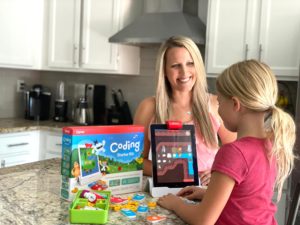


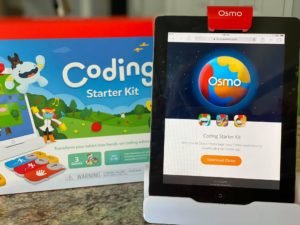
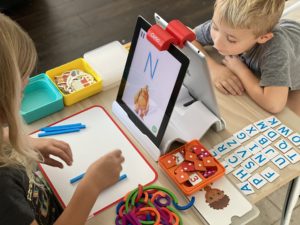
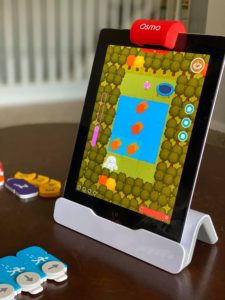
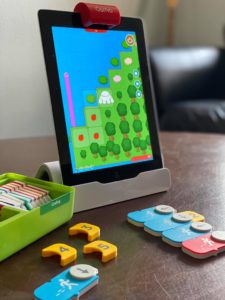
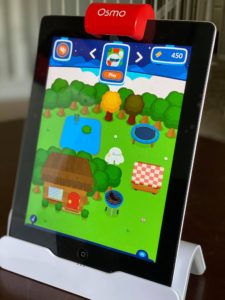
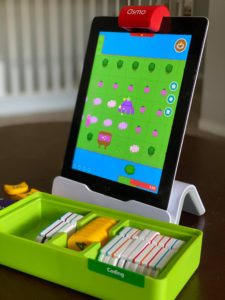
 What a monumental day in history we had t
What a monumental day in history we had t


 I am
I am 




 “Ways to Take Control
“Ways to Take Control
 “How to Utilize Play to Get
“How to Utilize Play to Get

Leave a Reply